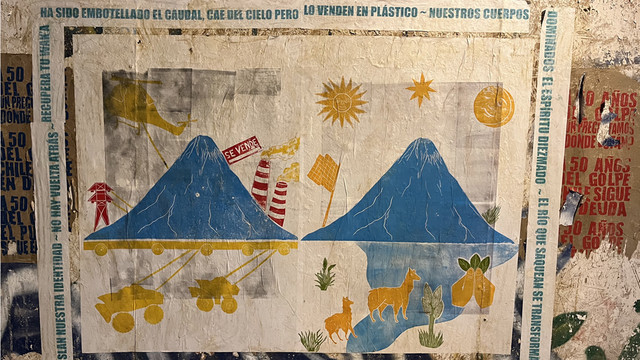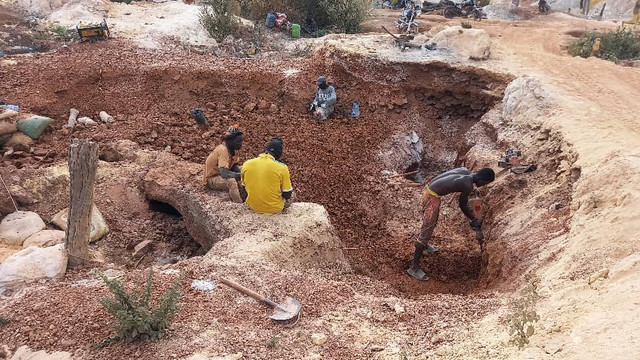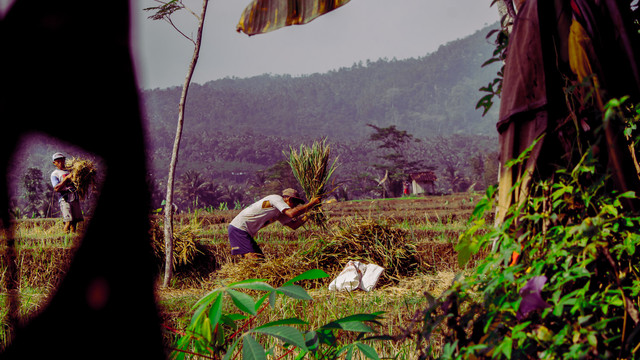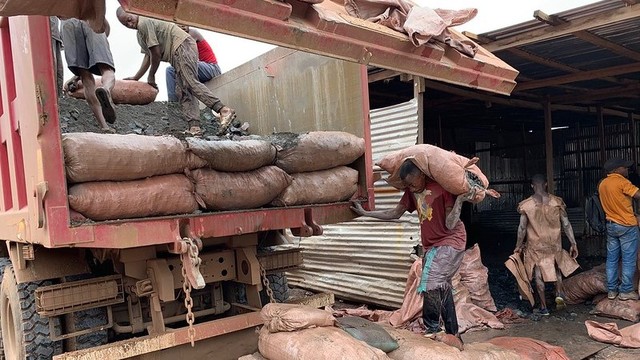Now that Fairtrade has proved its resilience to recession is it time to make it the gold standard for all ethical produce and move beyond its origins in agriculture? Is the certification scheme that circumvents traditional market and pricing dynamics ready for new challenges in new markets? If so, what will those challenges look like?
But how does Fairtrade fare when we move beyond its success in the agricultural sector?
There has been much excitement in recent years over the possibility of adapting and applying Fairtrade certification to minerals from economically disadvantaged artisanal and small-scale miners (ASM) and their communities. The problems with ASM, previously explored within this blog, are vast, complex and affect over 100 million people worldwide within a largely informal and unorganised sector. Some of those working within ASM are looking to Fairtrade as a means to market ‘ethical minerals’ (including diamonds and gold) and thus promote both social and economic development within the sector.
The Alliance of Responsible Mining (ARM) was established in 2004 to promote social justice and environmental value in ASM, which it does, in part, through the development of standards. ARM is currently working with the Fairtrade Labelling Organisation (FLO) to field test the Fairtradeand Fairmined standard for ASM.
CASM (the Communities and Small-Scale Mining body) has played a key role in the development of the Fairtrade standard and published a paper in 2008 on certification in ASM as “an emerging opportunity for sustainable development”. This paper clearly outlines who can participate in Fairtrade certification within artisanal and small-scale mining: community based organisations with demonstrated success in achieving developmental goals that are legal or in the process of legalising their operations.
ARM believes its partnership with FLO will enable both to meet shared strategic objectives: ’ARM developing supply and Fairtrade Labelling creating demand for gold’. However, it isn’t just gold; they are creating supply and demand for certified gold - in this case Fairtrade certified gold - which is a market that millions of producers are unable to access.
What can the mining sector learn from agriculture’s experience with Fairtrade?
Numerous studies have been undertaken on Fairtrade’s impact on agriculture. These show that it is not the fair, guaranteed minimum price that is the primary benefit to producers. Rather, producers benefit most from improved market access; reduced market volatility; more direct trading relationships with buyers; producer organisation (hence bargaining power and meaningful participation within value chains); and improved internal control systems.
But what of criticism of Fairtrade? The Adam Smith Institute’s 'Unfair Trade' leads the critique with its accusations of market distortion, market exclusion and market enslavement . Critics of certification, and Fairtrade in particular, add that it is unable the reach the poorest and most marginalised farmers; that farmers find it difficult to meet requirements to organise (often a mandatory or de facto mandatory requirement of certification); and that certification favours the ‘best’ small farmers. For these reasons the relevance of certification for informal markets has been called into question.
So, would a Fairtrade standard for minerals risk excluding the swathes of unorganised artisanal and small-scale miners and creating yet another barrier to market entry? Would it place additional and burdensome costs on miners who struggle to meet the many standards already in place for minerals? Moreover, how can ASM’s largely unorganised and unstable modes of operation meet the Fairtrade requirements of democratically organised cooperatives, landholding and bank accounts?
Evidence from the agricultural sector and emerging critiques from the minerals community highlight the risks to ASM and their communities from a certification scheme that fails to reflect the vagaries, distinct characteristics and inherent complexities of the sector. The ASM sector is not only unorganised but its activities are largely conducted within the informal sector. As such, certification (as we know it) may struggle to address the root causes of problems within the sector caused largely by marginalisation, informality and poor skills and infrastructure.
The Diamond Development Initiative is developing and promoting so-called ’development diamonds’, which, it explicitly states, fill the gaps left by Fairtrade and standards set by organisations such as the Responsible Jewellery Council, to work with the bottom tier of miners and small companies who operate on their own. Such standards, which are more sympathetic to the majority of ASM, may avoid excluding the most vulnerable from markets.
The mining sector should learn from experiences within the agricultural sector where certifying bodies are searching for ways to expand into the informal and unorganised sectors. Rainforest Alliance, which too has proved recession proof and seen rapid growth over the past year , is identifying ways to expand to the informal cocoa sector in Cote D’Ivoire by working through local trading structures. If Rainforest Alliance too looks to expand to mining sectors in the future it will have a greater chance of success if it applies this learning on how to adapt certification to the unorganised, the informal and the small.
Lessons for the future?
Certification bodies, bolstered by their continued success and resilience to recession, are working hard to adapt and harness the clear benefits of their standards to new sectors and previously unreachable producers. In the meantime, however, they risk fuelling a demand for certified goods that millions of small-scale producers cannot satisfy.




